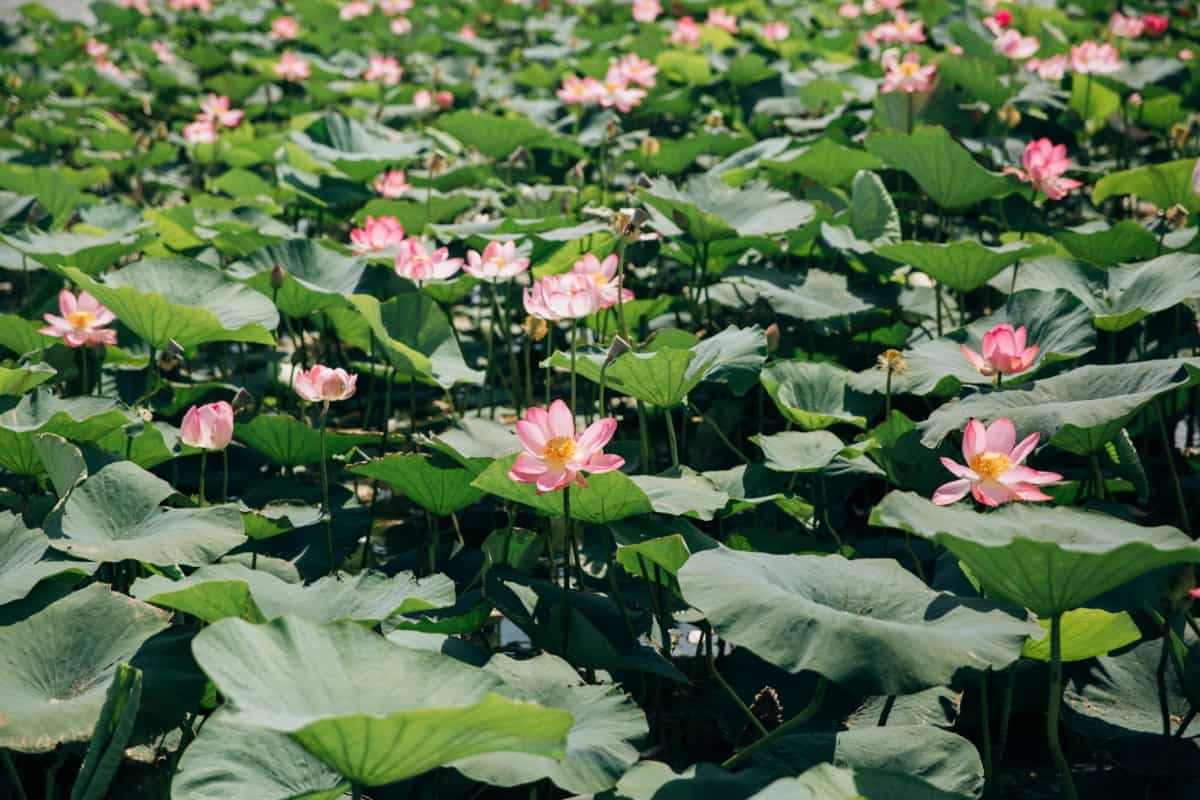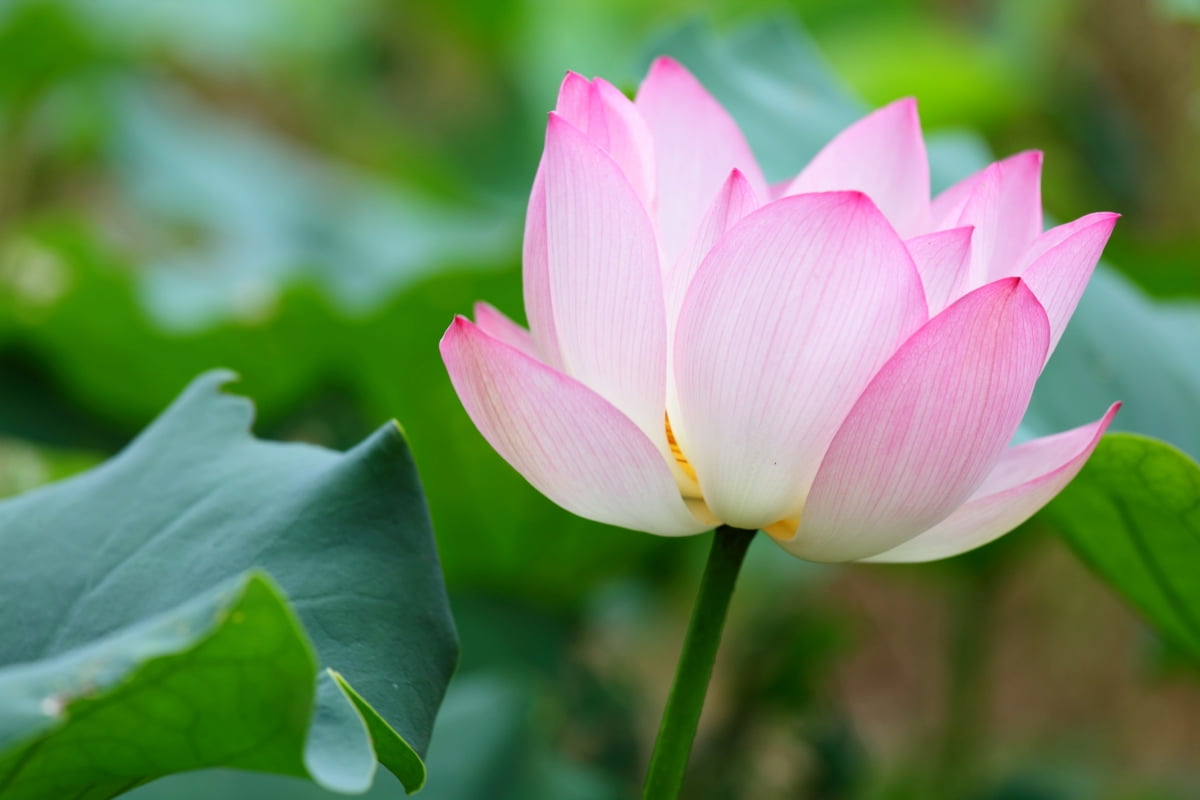The lotus is an aquatic perennial plant revered for its enchanting blooms and its tranquility to the landscape. Cultivating these spectacular beauties, however, requires a fundamental understanding of their nutritional requirements and the appropriate selection and application of fertilizers.

Here we learn about the best fertilizers for lotus plants, when and how to apply them, the specific requirements of the plant, and the differences between synthetic and organic fertilizers, including their respective NPK ratios. We will also see some homemade fertilizer concoctions that can aid in the lush growth of your lotus plants.
Best Fertilizer for Lotus
Understanding the Nutritional Requirements of the Lotus Plant
Lotus plants are heavy feeders, requiring a rich supply of nutrients to produce their iconic, large flowers. They primarily demand high quantities of macronutrients, namely Nitrogen (N), Phosphorous (P), and Potassium (K). Nitrogen promotes lush, vegetative growth and is essential for the formation of chlorophyll.
Phosphorous aids in the development of roots and flowers, while Potassium is vital for overall plant health and disease resistance. While these macronutrients are primary, lotus plants also require micronutrients such as iron, magnesium, and zinc, albeit in lesser quantities. These micronutrients play crucial roles in various plant metabolic activities and biochemical reactions.
Synthetic Versus Organic Fertilizers: Understanding NPK Ratios
Both synthetic and organic fertilizers differ in their NPK ratios, which denote the proportions of the three primary nutrients they contain. Synthetic fertilizers are chemically produced and usually contain high concentrations of nutrients, making them immediately available to plants. They are typically presented with an NPK ratio on their packaging, such as 20-10-10 or 10-6-4. The first number represents Nitrogen, the second Phosphorous, and the third Potassium. Thus, a 20-10-10 fertilizer contains 20% Nitrogen, 10% Phosphorous, and 10% Potassium.
On the other hand, organic fertilizers are derived from natural sources like compost, manure, or bone meal. Their nutrient concentrations are generally lower than synthetic fertilizers, and the nutrients are released slowly as the organic matter decomposes. This slow release can provide a prolonged supply of nutrients, but it may not be sufficient for plants with high nutrient demands, such as the lotus.
Best Synthetic Fertilizers for Lotus
A type of slow-release fertilizer that slowly releases nutrients over time, with a balanced ratio of nutrients like nitrogen, phosphorous, and potassium, is ideal for lotus plants. The higher phosphorous content in the fertilizer helps the plants produce vibrant and colorful blooms, while nitrogen and potassium support the overall health and strength of the plants. One recommended product for lotus plants is the PondCare Aquatic Plant Food Tablets.
In case you missed it: The Best Fertilizer for Tulips: When and How to Apply

These tablets have a balanced ratio of nutrients, specifically ten parts nitrogen, 14 parts phosphorous, and eight parts potassium (10-14-8). They are convenient because you can insert them directly into the potting soil. Another option to consider is the Laguna Temperature Activated Aquatic Fertilizer Spikes, which have a nutrient ratio 16-9-12. These spikes are designed to release nutrients only when the temperature is right for plant growth.
Best Organic Fertilizers for Lotus
You may opt for products like compost, worm castings, or fish emulsion if you prefer an organic approach. However, while these are excellent sources of slow-release nutrients, they may not meet the high nutrient demands of lotus plants on their own. You can consider supplementing organic fertilizers with additional nutrient sources. For instance, bone meal, rich in Phosphorous, can promote robust flowering. Similarly, greensand, a natural mineral product, can provide the necessary Potassium for overall plant health.
Homemade Fertilizers for Lotus
There are several viable options for garden enthusiasts who wish to prepare their homemade fertilizers. One such method involves creating compost tea, a nutrient-rich solution made by steeping compost in water. Another homemade fertilizer can be made using banana peels. Similarly, eggshells, which are high in Calcium, can be ground and applied to soil to enhance its nutrient content.
However, while homemade fertilizers are a fantastic way to recycle kitchen waste and reduce environmental impact, they might not provide the nutrient balance required by lotus plants. Therefore, they are better used as supplements to a balanced, commercial fertilizer regimen.
When and How to Apply Fertilizer to Lotus
The timing and method of fertilizer application are critical to ensure nutrient uptake and avoid potential damage to the lotus plants. Lotus plants should be fertilized during their active growing season, typically spring through early fall. Start fertilizing when the plant sends out floating leaves, usually a few weeks after planting.
To use granular fertilizer, gently push the small grains into the soil near the plant, being careful not to harm the roots. For tablet forms, push the tablet into the soil close to the plant’s roots. Dilute liquid fertilizer and add it to plant water. Fertilize every a month; however, during peak flowering (typically summer), fertilize every two weeks to give appropriate nutrition. Stop fertilizing by late summer or early fall to prepare the plant for winter dormancy.
Additional Tips for Fertilizing Lotus Plants
A proper fertilizing regimen for lotus plants extends beyond selecting a suitable fertilizer and its timely application. It also involves monitoring plant health, understanding signs of nutrient deficiencies, and knowing how to correct such deficiencies when they appear. Lotus plants are adept at communicating their nutritional needs through subtle changes in their appearance. Yellowing leaves, for instance, often indicate a Nitrogen deficiency.
A Phosphorous deficiency might result in poor flower development or unusually dark foliage, while a Potassium deficiency might manifest as weak stems and faded, mottled leaves. Recognizing these symptoms can help you tailor your fertilizing regimen more effectively to meet your plant’s nutritional needs.
In case you missed it: The Best Fertilizer for Bougainvillea: When and How to Apply

Moreover, while fertilizers provide essential nutrients, they must be used judiciously. Over-fertilization can be as detrimental as under-fertilization. Excessive nutrients can lead to overly lush growth at the expense of flowering, or worse, burn the roots and kill the plant. Therefore, following the manufacturer’s recommended dosage is crucial, and never applying fertilizer to dry soil, as it can lead to nutrient burn.
Conclusion
Fertilizing lotus plants is not merely a matter of selecting the right product. It also involves understanding the specific nutritional requirements of the plant and the differences between synthetic and organic fertilizers. When choosing a fertilizer, pay close attention to the NPK ratio, considering that lotus plants require high amounts of these macronutrients.
- Feed Your Flock for Less: Top 10 Tips to Save on Chicken Feed
- Ultimate Guide to Ossabaw Island Hog: Breeding, Raising, Diet, and Care
- Hatching Answers: The Top 10 Reasons Your Chickens Aren’t Laying Eggs
- Eggs and Economics: Breaking Down the Cost of Raising Backyard Chickens
- Defend Your Greens: Proven Methods to Keep Iguanas Out of Your Garden
- Ultimate Guide to Cinnamon Queen Chicken: A Comprehensive Guide for Beginners
- Ultimate Guide to California Tan Chicken: Breeding, Raising, Diet, Egg-Production and Care
- Ultimate Guide to Marsh Daisy Chicken: Breeding, Raising, Diet, and Care
- 10 Types of Chicken Farming Businesses You Can Start for Profits